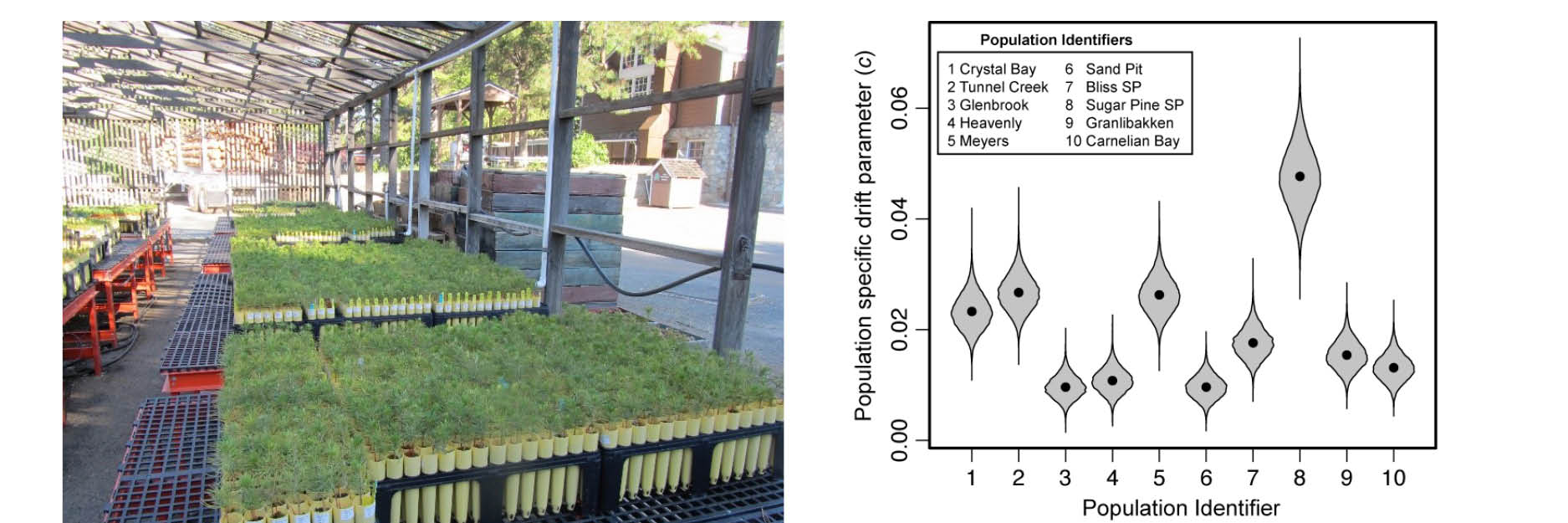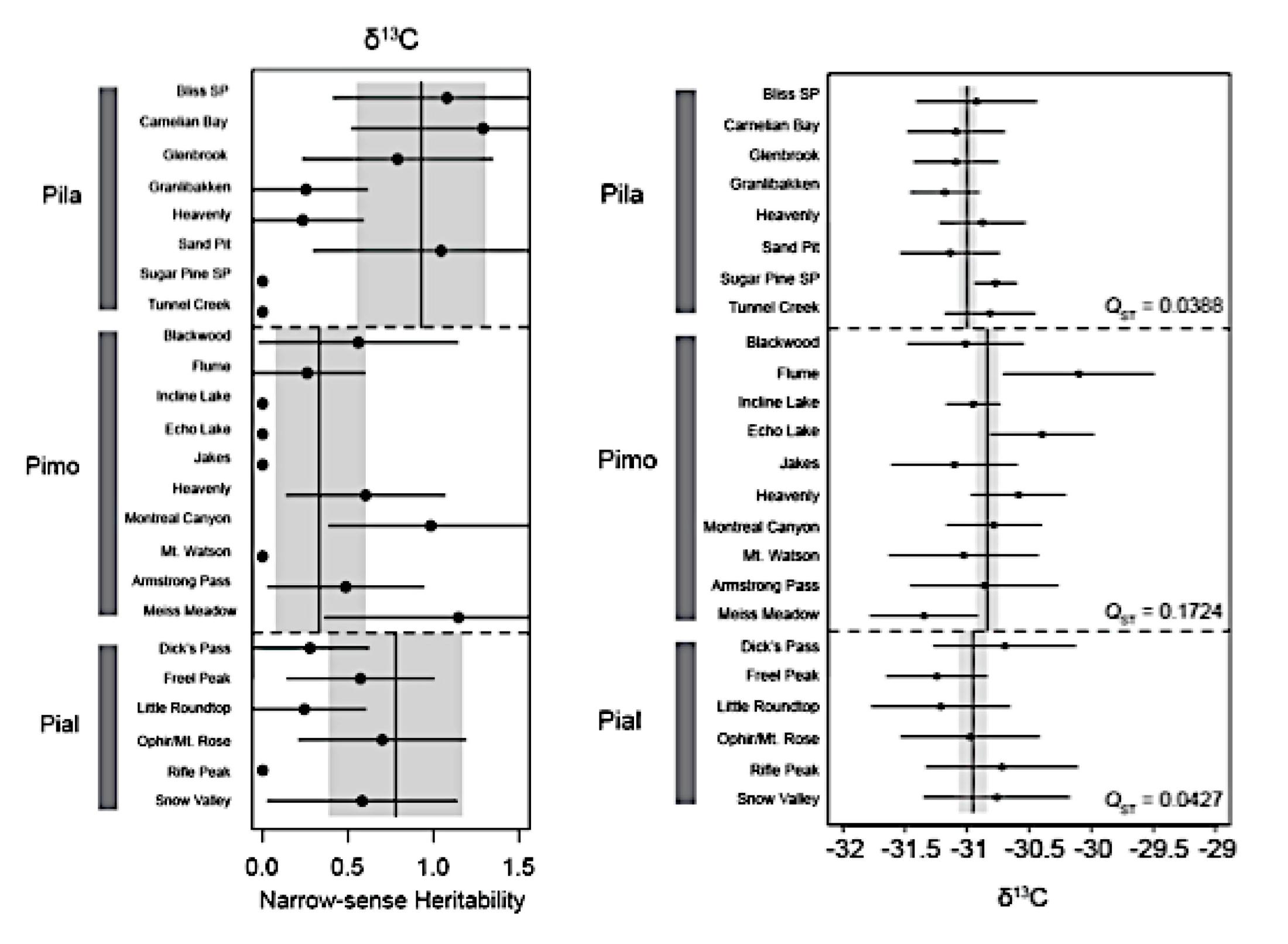

Our lab employs ecological and genetic approaches to better understand the interaction of environmental influences (disease, insects, climate, soil, landscape heterogeneity, fire, historical land-use) and evolutionary processes (adaptation, gene flow, drift, selection) on ecologically important plant traits. Common garden experiments allow us to measure a suite of adaptive traits that are fundamentally important for the response of tree species to climate, drought, insects, pathogens, and the soil environment.
Phenotypic traits measured fall into the following categories:
I. disease resistance
II. drought adaptation
III. phenology
IV. resource partitioning and capture
V. phytochemical defense
These adaptive traits are heritable and often structured along environmental gradients (climate, soil, geography). Adaptation to stressful environments, successful recruitment, episodic mortality, and effective dispersal are all factors that can promote evolutionary adaptation of forest trees. Quantitative genetic and field-based population studies will allow our lab to identify important demographic parameters (fecundity, survival, and growth) and fitness-related traits that can promote evolutionary change. Eco-evolutionary studies and data (e.g., demographic, dispersal, phenotypic variance, heritability) will be critical in assessing evolutionary potential and population dynamics of forest tree species.
